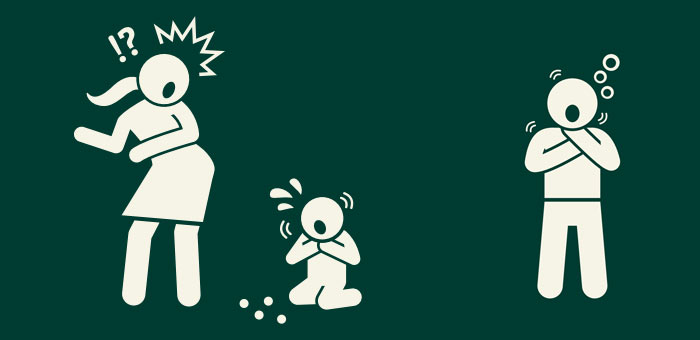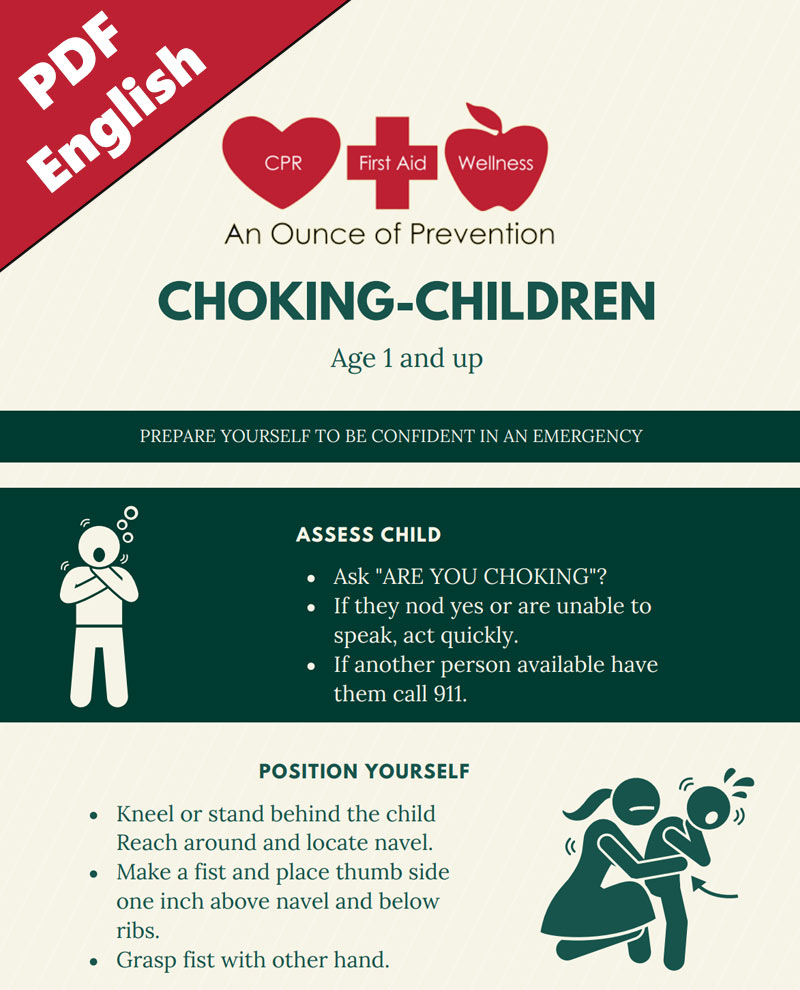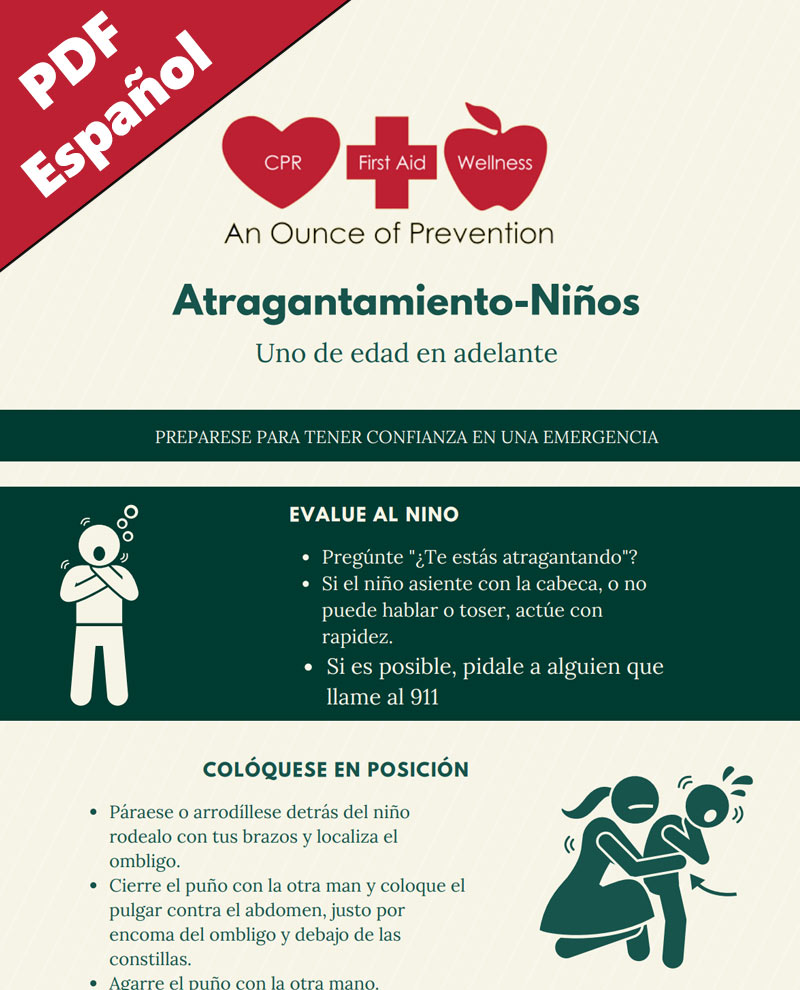As experts in CPR training, parents and caregivers are reaching out to us to ask about children and choking, especially in this holiday season. In general, they are all asking a version of this question: What is it that we can do to keep our children safe from choking?
One major concern for parents and caregivers is the changing environment that the holiday’s bring. Holidays tend to be busier with get togethers and can be chaotic resulting in less watchfulness of what their little one’s may be getting into. We all know that choking is dangerous, but not everyone knows how to prevent choking and what to do if someone starts to choke right in front of them.
Choking is stressful!
Choking is stressful, not only for the person who is choking but also for the person who is there witnessing a choking event. The best way to alleviate the stress that a choking event can bring is to take a CPR Class. Taking a CPR class will give you the knowledge and the skills you need to calmly respond to a choking event.
With some knowledge training know-how, choking can be avoided. Choking happens when food or an object is ingested and is large enough to block the airway passages. On inhalation the object can be drawn into the airway tighter and blocks air from entering the lungs. For people aged one year old and older a forceful thrust under the ribs and into the diaphragm can pressurize the air and force the object up and out of the mouth. For people under one year old, chest compressions and back slaps can create enough pressure to dislodge the object.
Young children are particularly at risk for choking because of their small air passages, inexperience with chewing and the natural tendency to put objects in their mouths.
| Choking Prevention Tips for Children |
| When eating, don’t leave a child unattended |
| Children need a calm, unhurried meal time |
| Children should eat sitting or standing- and not eat while running or playing |
| Cut cylindrical shaped foods like hotdogs length wise twice and then into smaller pieces. |
| Steam or cook vegetables to soften their texture |
| Offer liquids at meal times |
| Peanut butter or a peanut butter and bread can stick to the roof of their mouth, offer this in small bits |
| Pay attention to toys and small objects. Use manufacturers recommendations for age appropriate toys |
| Latex balloons, coins, marbles, toys with small parts, marker caps are all potential choking hazards |
When considering what little ones could choke on, we think about food or items that are round and could plug the throat.
- Hotdogs
- Carrots
- Grapes
- Batteries
- Small toys
When choosing toys for your children, look at the manufacture’s recommendation on the outside of the packaging. Toys that are safe for children ages one and one half and older will be labeled 1 1/2 + on the package. Toys that are safe for children ages three and older will be labeled on the package 3 + and so on.
To provide the best care it is important to recognize the difference between mild and severe airway blockage.
| Signs of a Mild Airway Blockage | Signs of a Severe Airway Blockage |
| Person can: | Person cannot: |
| Speak | Take in enough air to dislodge the object |
| Cough | Breathe in or out |
| Gag | Speak or cough forcefully |
| Clear their own airway with a forceful cough | May hold their throat while trying to clear the obstruction |
| Stay close and be ready to assist | Begin abdominal thrusts |
The best way to be able to help a friend or family member who is choking is to take a CPR class. CPR classes give people the practical knowledge, hands on skills and the confidence that is necessary to intervene when someone is choking.
To take the next step in gaining the knowledge and skills to help a choking person; sign up for a class by emailing marlo@acprclass.com



